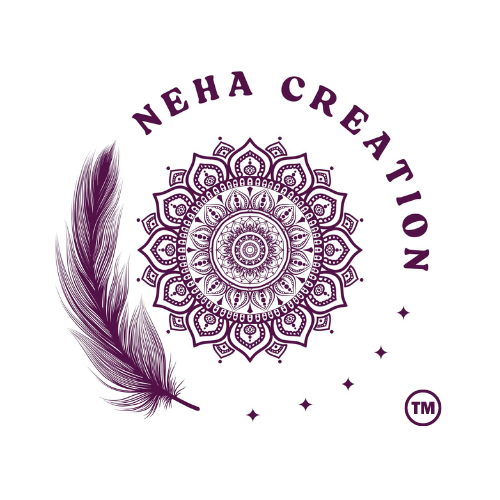Mandala art, with its mesmerizing symmetry and intricate patterns, has captivated artists and art enthusiasts for centuries. Traditionally drawn on paper or canvas, modern mandala artists are pushing creative boundaries by exploring various surfaces. Whether you're a beginner or an experienced artist, painting mandalas on unconventional surfaces can be an exciting and rewarding experience. In this blog, we’ll explore the endless possibilities of handmade mandala art painting on different surfaces, along with tips, techniques, and the best materials to use.
Why Explore Different Surfaces for Mandala Art?
Experimenting with different surfaces enhances your creativity and allows you to transform everyday objects into stunning pieces of art. Here’s why you should try painting mandalas on different materials:
-
Unique Aesthetic Appeal: Each surface offers a distinct texture and look, making your artwork stand out.
-
Versatility: From home decor to personalized gifts, mandalas on varied surfaces create endless artistic opportunities.
-
Skill Enhancement: Working on different materials sharpens your techniques and expands your artistic abilities.
-
Market Demand: Unique mandala artworks on wood, fabric, stone, and more are highly sought after in the handmade art market.
Best Surfaces for Handmade Mandala Art Painting
1. Canvas – A Classic Choice
Canvas is a go-to surface for artists due to its smooth texture and durability. Pre-stretched canvas or canvas boards provide excellent support for intricate mandala designs.
-
Best Paints: Acrylic paints, gouache, and fabric markers.
-
Techniques: Use a fine liner brush or dotting tools for precision. A base coat of acrylic paint helps create a vibrant background.
2. Wood – Rustic and Natural Appeal
Wood surfaces add a rustic charm to mandala paintings. Wooden coasters, plaques, and MDF boards are great choices for wood mandalas.
-
Best Paints: Acrylic paints, paint markers, and wood-burning tools for pyrography.
-
Techniques: Sand the surface for smoothness, apply a base coat, and seal it with varnish for longevity.
3. Fabric – Wearable Mandala Art
Painting mandalas on fabric allows you to create wearable art, home textiles, and personalized gifts. T-shirts, tote bags, and cushion covers make great canvases for fabric mandalas.
-
Best Paints: Fabric paints and acrylics mixed with fabric medium.
-
Techniques: Use a stencil or freehand drawing. Heat-set the design with an iron to make it washable.
4. Stone – Nature-Inspired Mandala Creations
Mandala art on stones or pebbles is a trending form of decor and mindfulness practice.
-
Best Paints: Acrylic paints, paint pens, and dotting tools.
-
Techniques: Prime the stone with a white or black base coat for better color visibility. Finish with a clear sealant for durability.
5. Glass – Translucent Beauty
Glass surfaces like jars, bottles, and mirrors add an elegant touch to mandala art.
-
Best Paints: Glass paints, acrylic paints, and permanent markers.
-
Techniques: Use an outliner for precision. Bake the painted glass in an oven to make it permanent.
6. Ceramic and Clay – Handmade Charm
Mandala patterns on ceramic plates, tiles, and clay pots offer a timeless appeal.
-
Best Paints: Porcelain paints, ceramic markers, and acrylic paints.
-
Techniques: Use stencils for uniformity and seal with a glossy or matte varnish.
7. Leather – Bold and Artistic
Mandala designs on leather items like wallets, bags, and bookmarks add a bohemian touch.
-
Best Paints: Leather paints and acrylics.
-
Techniques: Use a fine brush or embossing tools to etch the design before painting.
8. Paper and Cardstock – Traditional Yet Versatile
Paper remains the easiest and most accessible surface for mandala art, perfect for beginners.
-
Best Paints: Watercolors, gouache, and colored pencils.
-
Techniques: Use a light pencil sketch before inking or painting for accuracy.
Essential Tools and Materials for Mandala Art
To create stunning mandala paintings on various surfaces, having the right tools is essential:
-
Paints: Acrylics, fabric paints, glass paints, gouache, and watercolors.
-
Brushes: Fine liner brushes, round brushes, and dotting tools.
-
Markers and Pens: Acrylic markers, paint pens, fineliners.
-
Stencils: Helps with symmetrical designs.
-
Sealers and Varnishes: Protects and enhances your artwork’s longevity.
-
Palettes and Mixing Trays: For color blending.
Tips for Creating Mandala Art on Different Surfaces
-
Prepare the Surface: Clean, sand, or prime the surface before painting.
-
Use a Base Coat: It helps the paint adhere better and enhances color vibrancy.
-
Layering is Key: Build up your design with thin layers rather than one thick coat.
-
Sealing is Essential: Protect your artwork from wear and tear with a sealant.
-
Experiment with Textures: Use dotting tools, sponges, or embossing techniques for unique effects.
Neha Creation Introduced "2-Month Mandala "Surface Exploration" Course
Conclusion
Exploring handmade mandala art painting on different surfaces opens up a world of creative possibilities. Whether you choose wood, fabric, stone, or glass, each material offers a unique aesthetic that enhances your artwork. With the right techniques, tools, and a touch of imagination, you can create stunning mandalas that captivate and inspire. So, grab your paints and start experimenting with different surfaces today!
Are you ready to take your mandala art to the next level? Explore our Mandala Art Supplies and start creating breathtaking designs on any surface!






